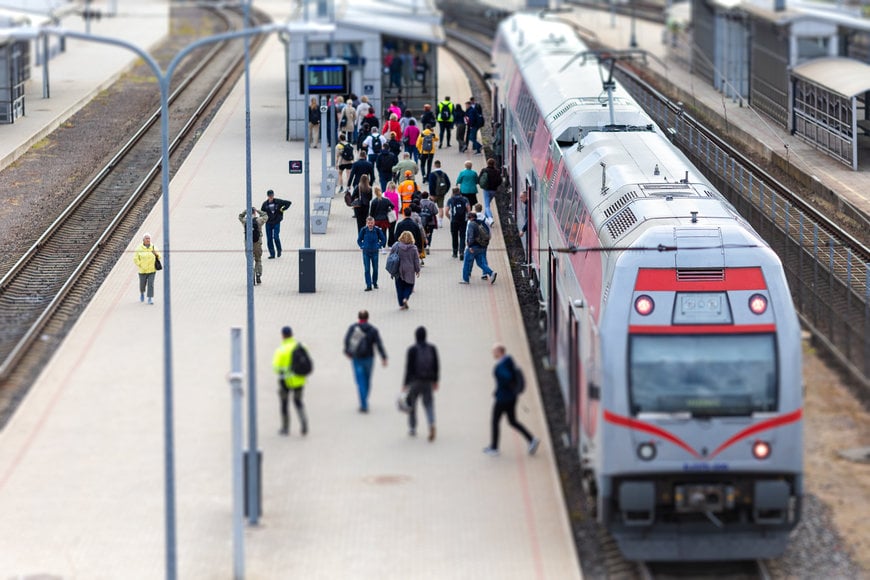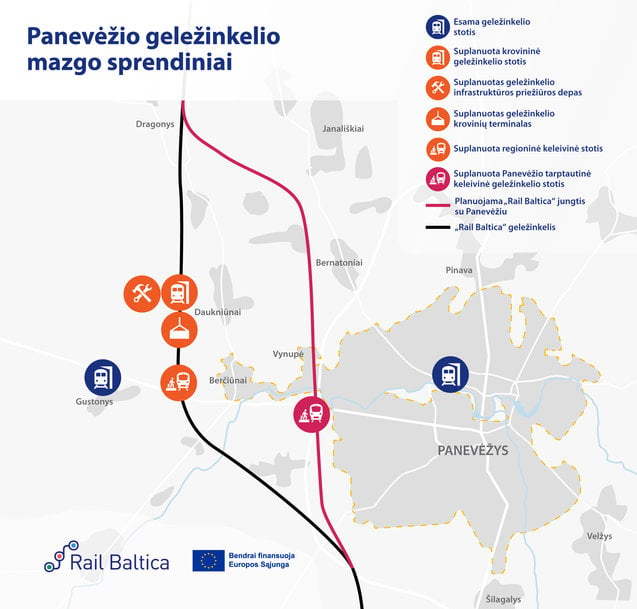Rail Baltica railway infrastructure solutions at the Panevėžys node presented
The public can now familiarise with concrete solutions for the infrastructure of the European railway Rail Baltica in the Panevėžys Region.

The European-gauge railway track is planned to be brought closer to the narrow-gauge railway, and it will be possible to fulfil the condition set during the territorial planning – to preserve all 23 structures located in the territory of the Šilas garden community.
Residents, communities, related organisations and business representatives of Panevėžys city, district and nearby areas are invited to familiarise themselves with the concrete solutions of Rail Baltica’s Panevėžys node – substantiated proposals for the infrastructure development plan of the Panevėžys node are expected to be presented before 17 September.
“Our aim has always been to meet the interests of the residents and the goals of the strategically important Rail Baltica project. We are happy that we managed to find an optimal solution for the local community and the fast railway track – these solutions will allow us to preserve all 23 structures located in the territory of the Šilas garden community. The already planned Panevėžys international passenger station, cargo terminal and infrastructure maintenance depot will create undoubted benefits for the region. We hope that improved solutions that meet public expectations will allow the project to move forward faster,” said Loreta Maskaliovienė, Deputy Minister of Transport and Communications.
In cooperation with the institutions concerned, the Department of Cultural Heritage, the Ministry of Culture and the Ministry of Transport and Communications, it was agreed that the railway route detailed in the special plan for the construction of the Panevėžys railway node should be shifted to the eastern side, using the territory of the narrow-gauge railway.
According to the project developers, Rail Baltica will have a significant impact on the regions on both side of the European railway route.
“During the lifetime of the railway, new jobs will be created in the fields of infrastructure management and maintenance, station and terminal management, all types of passenger and cargo management. Other factors of growth are also foreseen: tourism, business and urban development. Constructive dialogue with the public can help solve emerging problems and achieve the greatest possible long-term benefits for the Panevėžys Region,” said Vytis Žalimas, CEO at LTG Infra.

In October 2023, the Ministry of Transport and Communications approved an alternative where the railway infrastructure of Rail Baltica should be developed in Panevėžys – the international passenger station is planned to be built in the western part, next to the existing transport hub, i.e. the bypass.
A regional passenger station meeting the needs of the region is planned near Gustoniai; a cargo station, infrastructure maintenance depot, cargo terminals, cargo and military equipment yards are planned to be built nearby.
One of the main goals of the Rail Baltica project is to integrate the capitals of the Baltic states into the European railway network. In order to achieve the greatest possible involvement and information of the public, not only procedural, but also additional meetings with Panevėžys city and district municipalities and communities were planned in order to answer all the questions that arise.
A total of three Rail Baltica international passenger stations are planned on the territory of Lithuania – in Vilnius, Kaunas and Panevėžys. It is planned that after the construction of the European standard Rail Baltica railway, passenger trains will be able to travel at a speed of up to 249 km/h. The journey by train from Panevėžys to Kaunas will then take about 37 minutes, and it will be possible to reach Riga in 55 minutes.
www.railbaltica.com

